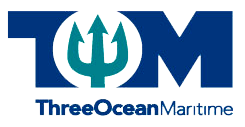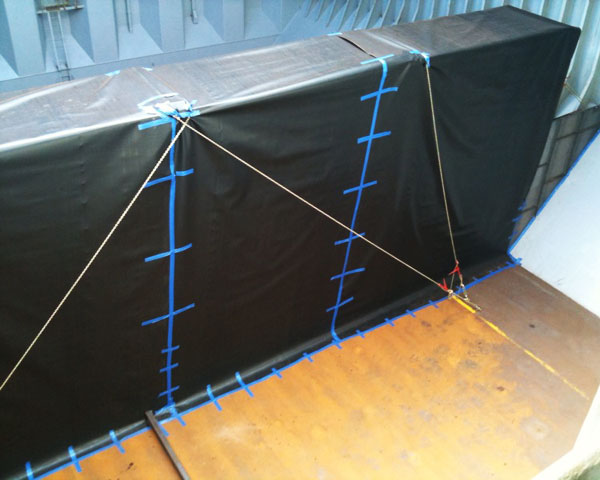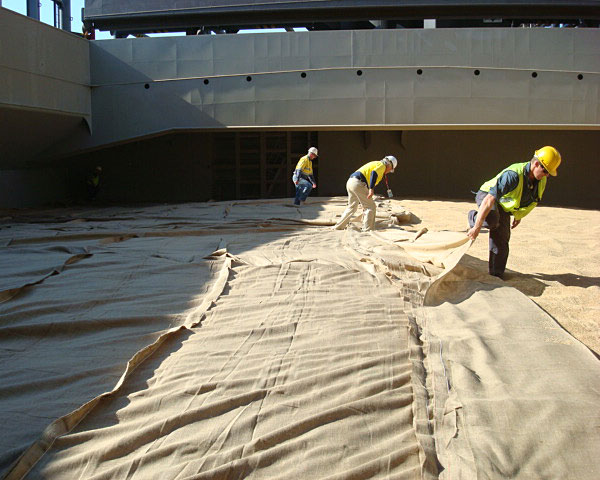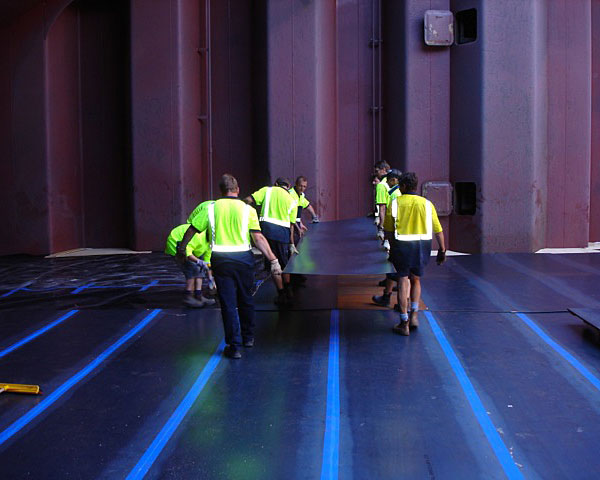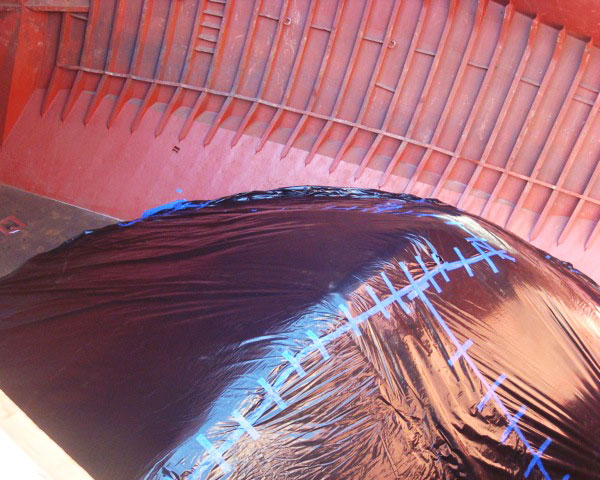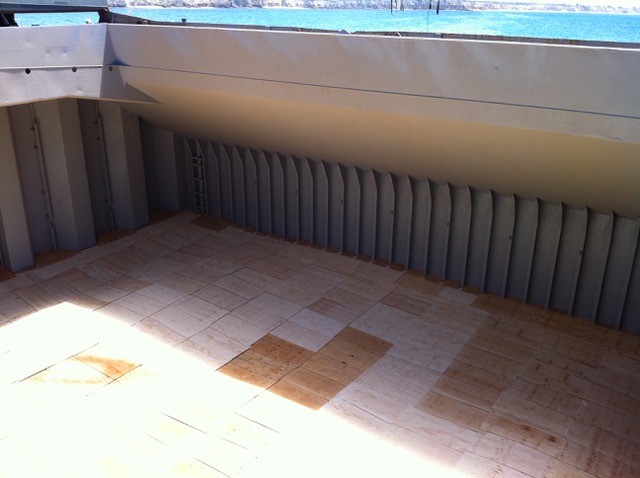
Separation of bulk grain and mineral cargo within holds.
Three Ocean Maritime specialises in the construction and installation of cargo hold separations and our reputation for innovation in developing new and unique types of separation to suit many types of dry bulk cargo is well known.
Separations for Grain
Vastly experienced in this field, Three Ocean Maritime’s first ever job back in 1998 was a separation for a grain cargo. Since that time we have performed hundreds of these at many different grain loading ports all around the Australian coast.
Grain Separation Types
Burlap Tarpaulin Separations and Variations – numerous types of basic grain separation from loose laid burlap or polythene tarpaulins, to those secured with timber chocking and other variations, suited to all types of grain cargo.
Burlap and Plywood Separation – also sometimes known as a ‘Kobe separation’ or a ‘Japanese separation’. With this type of separation, the cargo is very well trimmed before fitting a burlap tarpaulin overlaid with plywood. This high specification separation is often used between dissimilar grains or for high quality grains such as noodle wheat.
Separations for Minerals
Three Ocean Maritime perform a range of hold separations to suit various types of mineral cargo. The physical properties of a particular cargo, the quantity of the various parcels, the loading and the discharge methods are all considered when determining the type of separation used.
Mineral Separation Types
Polythene ‘Envelope’ Separations – a very cost effective separation, best suited to separating small to medium sized parcels of mineral sand cargo, though we have also successfully employed variations of this type of separation on ‘lump’ cargo.
Vertical Bulkhead / Container Bulkhead Separations – quick to construct, temporary athwartship bulkhead separations that are best suited to larger cargo parcels of mineral sand, concentrate or other ‘lump product’.
Horizontal Steel Plate Separations – developed by us especially to suit large parcels of ‘spodumene’ mineral sand, which is lighter than most other types of mineral sand and therefore of too great a volume to separate by more conventional methods.
Chalk Line or Paint Mark Separation – a very basic separation where the separation point between the grades of cargo is marked with a paint or chalk line on the sides of the hold. This type of separation is only used when there is little difference between the grades of cargo. To improve the effectiveness of this separation the lower parcel may be trimmed level and other indicators such as rubber matting laid on the cargo to provide a visual guide for the discharging stevedores.
